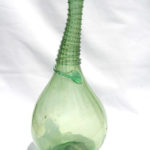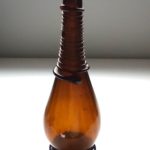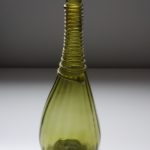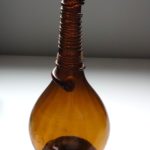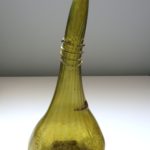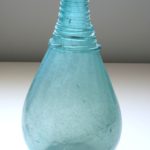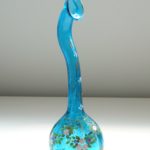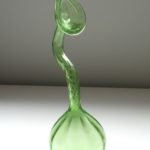1800
“Six corabahs of rose-water” – Symes, Emb. to Ava, p. 488.
1807
E.S. Waring makes interesting notes of both the Persian Wine and Glassmaking industries. If he is to be believed, both were in a period of significant decline during his visit, with only one remaining glasshouse in Shiraz, and no export of Shirazi wine:
- “They have here a glass-house and a foundery, both worth seeing. The bottoms which they blow, of glass, for the Kuleeans, have a curious appearance to a stranger; they are ornamented in the inside with representations of trees, flowers &c., and sometimes with small medallions. When the glass is just blown, they fix them in the bottom with small pincers; and so neatly are the pieces joined together, as to entirely escape observation.”(p. 31)
- “Sheeraz has no extensive manufactory; and, excepting a few swords, and perhaps a little wine, they export nothing to the northern parts of Persia.”(p. 47)
- “Chests of wine and rose water are likewise sent there {to India}, but the number is very inconsiderable. Tavernier mentions that 4125 tons were annually made at Sheeraz* {* Tavernier p 423 [or 426, or 428] – note, this is a reference that I cannot find in the original}, but this is by no means the case at present, for every man in Persia manufactures his own wine, and the exportation of it to foreign countries must be very trifling.”(p.77)
1813
“Carboy of rose-water . . .” – Milburn, ii 330.
1865
J. Ussher, in “A Journey from London to Persepolis”(London, 1865) writes in the context of Shirazi wines: “It is kept in large jars, and sold in glass bottles of various sizes, holding from a quart to two or three gallons. The manufacture of these bottles gives employment to a large number of people.”
1871
HULARI is a mountainous district near Shiraz, with fine vineyards, from which the choicest Persian wine is prepared, both red and white. This wine has much body, and resembles the strong Capo wines, and is fit to be exported. – Balfour, Cyclopaedia of India and of Eastern and Southern Asia, Commercial …, Volume 2, p. 627.
A DOW is a vessel employed in the trade between the Red Sea, the Arabian coast, the Gulf of Persia and the coasts of India, in Cutch, Guzerat and Malabar. They are always manned by Arabs. The large dows make generally one voyage in the season, to the southward of Arabia; taking advantage of the north-east monsoon to come down and the south-west to return with an exchange cargo. They generally bring dates, fruits, preserves, Shiraz-wine and horses, and take back rice, coir, canvas, cocoa-nuts, oil, timber, dammar, &c. – Balfour, Cyclopaedia of India and of Eastern and Southern Asia, Commercial …, Volume 2, pp. 141-2.
1875
“People who make it (Shiraz wine), generally bottle it themselves, or else sell it in huge bottles called Kuraba, holding about a dozen quarts.” – MacGregor, Journey through Korassan, &c, 1879, i 37.

